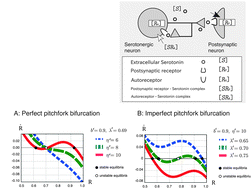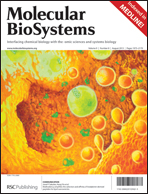Pitchfork bifurcation in a receptor theory-based model of the serotonergic system
Abstract
Abnormalities in the serotonergic system are thought to be a potent cause of several mental diseases. Past research has shown that autoreceptors are the key component. It is thought that the autoreceptor constructs a negative feedback circuit on this system and realizes homeostatic control on its neural activity. This study is mainly organized from the above mentioned knowledge. In this paper, we construct two possible models of the serotonergic system based on receptor theory and provide some predictions for this system with each model. In the first model, we predict that the deficit of


 Please wait while we load your content...
Please wait while we load your content...